Step into the enchanting world of Victorian era architecture, where ornate details and classic elegance reign supreme. The interiors of these grand houses are a treasure trove of design inspiration, offering a unique blend of sophistication and charm.
With their intricate moldings, rich color palettes, and statement furniture pieces, Victorian interiors are a true delight. In this article, we’ll explore the key elements that define this iconic style and provide you with practical ideas for incorporating them into your own home.
From lavish textiles to ornate accessories, we’ll delve into the world of Victorian interior design, helping you to create a space that exudes refinement and poise.
The Rich Heritage of Victorian Interior Design
Victorian interior design is renowned for its rich heritage, a blend of historical influences and innovative design elements. This distinctive style has captivated homeowners and designers alike, offering a glimpse into the opulence of the Victorian era.
Historical Context of the Victorian Era
The Victorian era, which spanned from 1837 to 1901, was a period of significant social, economic, and cultural change. During this time, Britain experienced industrialization, urbanization, and the expansion of its empire, all of which had a profound impact on interior design. The era’s design was characterized by a mix of revival styles, including Gothic, Rococo, and Classical influences, reflecting the period’s fascination with history and culture.
Evolution of Victorian Design Styles
The Victorian era saw the evolution of design styles through three distinct phases: Early, Mid, and Late Victorian. Each phase had its unique characteristics, shaped by the societal and technological advancements of the time.
– Early Victorian
Early Victorian design (1837-1850) was marked by the influence of the Industrial Revolution and the introduction of new manufacturing techniques. This period saw the rise of ornate furnishings and the use of rich, dark colors.
– Mid Victorian
Mid Victorian design (1850-1870) became more opulent, with an emphasis on heavy ornamentation, luxurious fabrics, and intricate patterns. This was the heyday of Victorian design, characterized by its grandeur and eclecticism.
– Late Victorian
Late Victorian design (1870-1901) saw a shift towards lighter, more airy interiors, with the introduction of new materials and the influence of emerging design movements like Art Nouveau. This phase was marked by a more restrained approach to ornamentation, reflecting changing tastes and preferences.
Essential Elements of Victorian House Interiors Ideas
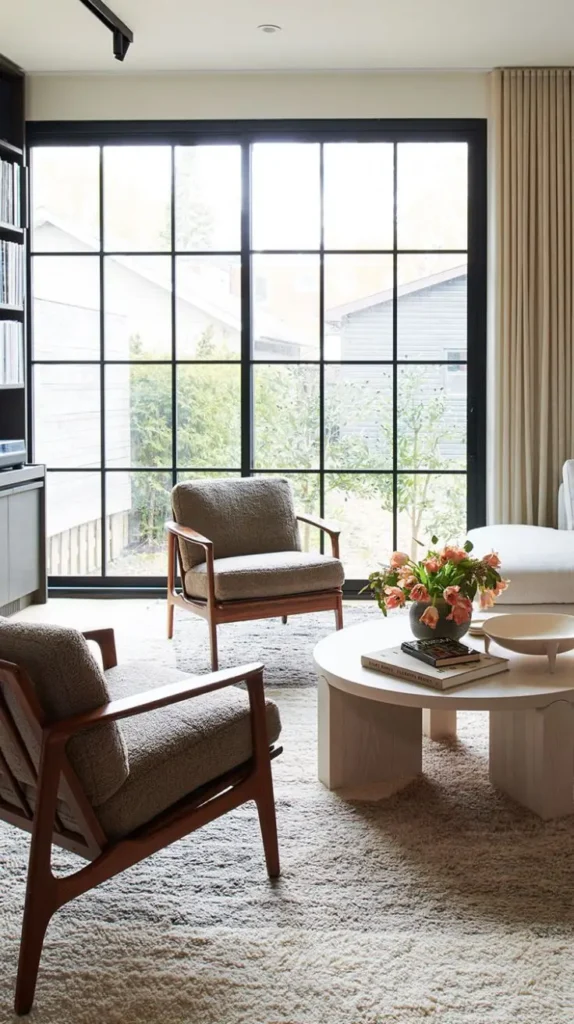
Victorian house interiors are renowned for their opulence and intricate details, making them a timeless source of inspiration for homeowners. The essence of Victorian design lies in its ability to blend grandeur with intricate patterns and rich textures.
Ornate Architectural Features
Ornate architectural features are a hallmark of Victorian interiors. These elements not only add visual interest but also contribute to the overall sense of luxury and sophistication.
– Crown Moldings and Ceiling Medallions
Crown moldings and ceiling medallions are quintessential Victorian features that add a touch of elegance to any room. Crown moldings, with their intricate designs, serve as a beautiful transition between walls and ceilings, while ceiling medallions provide a stunning centerpiece around light fixtures.
– Wainscoting and Paneling
Wainscoting and paneling are other notable architectural features of Victorian design. Wainscoting, typically covering the lower portion of walls, adds depth and texture, while paneling can be used to create a sense of warmth and coziness.
Rich Color Palettes and Wallpapers
Victorian interiors are also characterized by rich color palettes and elaborate wallpapers. Deep, bold colors and intricate patterns were used to create a sense of opulence and drama. Wallpaper, often featuring floral motifs or stripes, was a popular choice for adding visual interest to walls.
Luxurious Fabrics and Textiles
Luxurious fabrics and textiles played a crucial role in Victorian interior design. Velvet, silk, and lace were commonly used to upholster furniture, create drapery, and add decorative accents. These materials not only added to the aesthetic appeal but also contributed to the overall sense of luxury.
Victorian Living Room Design Inspiration
Creating a Victorian-inspired living room involves more than just selecting the right furniture; it’s about crafting an atmosphere that exudes refinement and charm. To achieve this, one must consider the characteristic elements that define Victorian interior design.
Statement Furniture Pieces
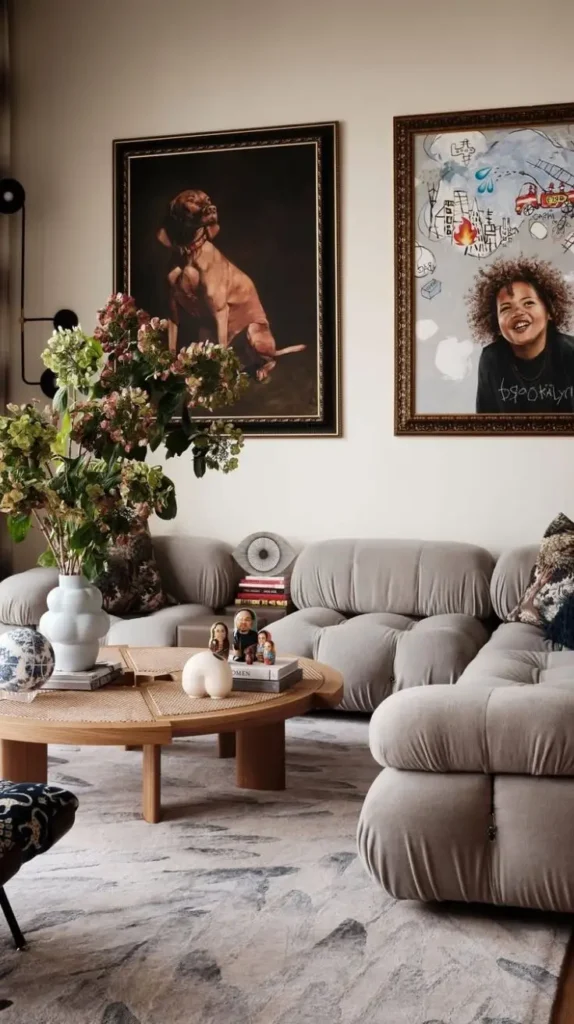
Statement furniture is crucial in Victorian living room design, as it sets the tone for the entire space. Two key pieces that can instantly elevate the room’s Victorian charm are settees and carved wood furniture.
– Settees and Fainting Couches
Settees and fainting couches were staples in Victorian living rooms, offering not only a place to sit but also a decorative focal point. Ornate upholstery and intricate carvings are hallmarks of these pieces, adding to the room’s opulence.
– Carved Wood Tables and Cabinets
Carved wood tables and cabinets are another essential element, bringing warmth and a sense of history to the room. The intricate carvings on these pieces reflect the Victorian love for detail and craftsmanship.
Decorative Accessories and Artwork
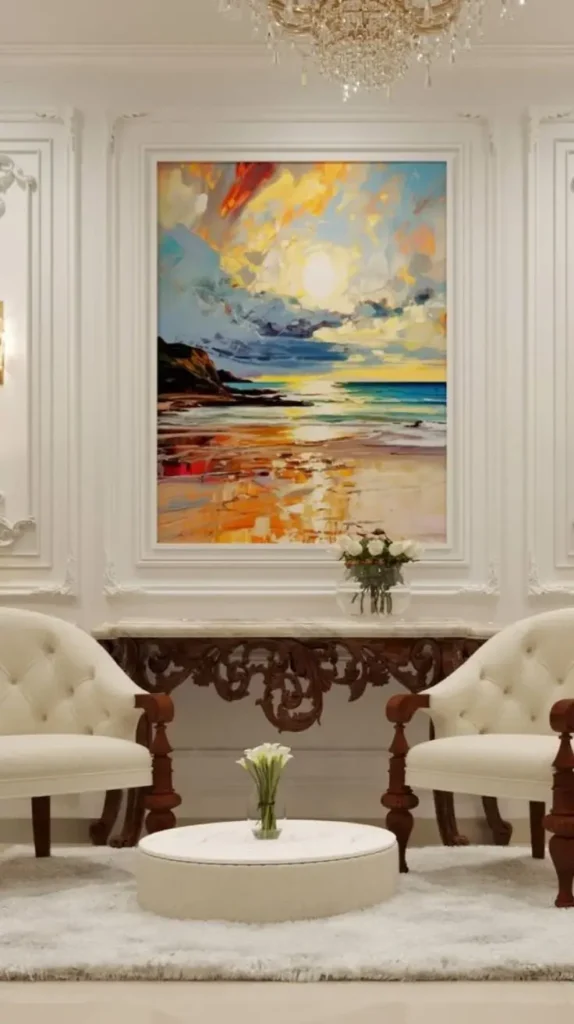
Beyond furniture, decorative accessories and artwork play a significant role in Victorian living room design. Items such as vintage vases, ornate mirrors, and framed artwork can add layers of visual interest and personality to the space.
Victorian Lighting Solutions
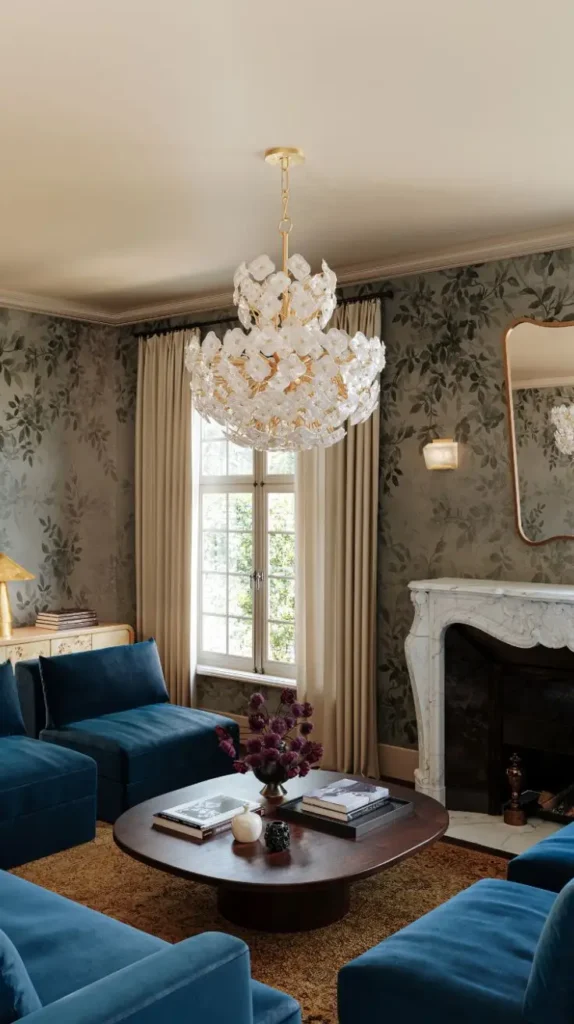
Lighting in a Victorian living room is not just functional; it’s also a decorative statement. Chandeliers, sconces, and table lamps with intricate details and ornate shades can enhance the room’s ambiance, creating a warm and inviting atmosphere.
Victorian Dining Room Elegance
The dining room, a space for gathering and entertainment, was a focal point in Victorian homes, showcasing the era’s love for grandeur and beauty. To recreate this elegance, it’s essential to understand the key elements that define a Victorian dining room.
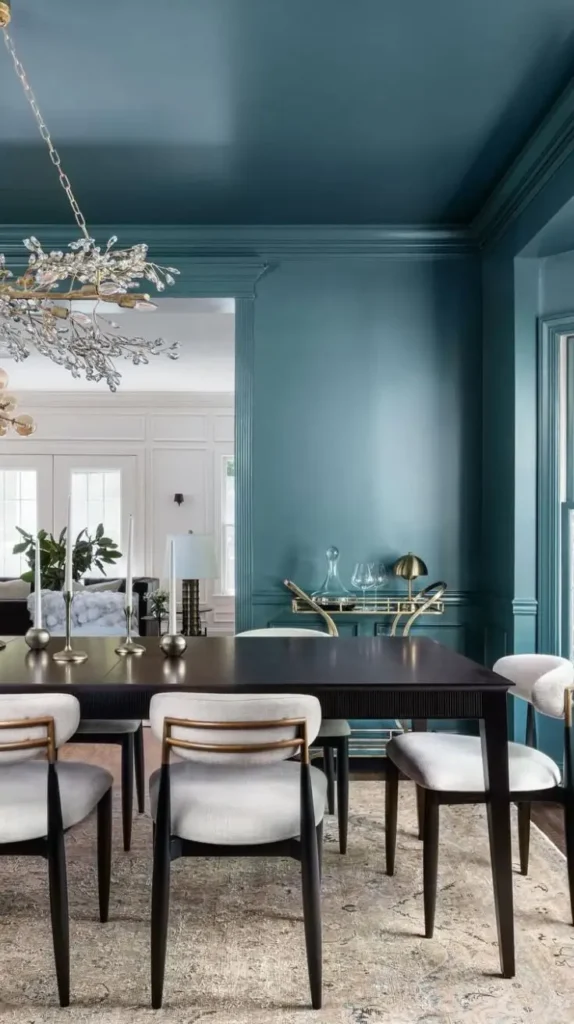
Formal Dining Furniture Arrangements
Formal dining furniture was a hallmark of Victorian dining rooms. The arrangement typically centered around a large, ornate dining table, often accompanied by chairs with intricate carvings. The layout was designed to facilitate formal dining and conversation.
A typical arrangement included a sideboard or buffet for serving and storing fine china and silverware. The placement of furniture was carefully considered to create a sense of balance and harmony in the room.
| Furniture Piece | Description | Characteristics |
|---|---|---|
| Dining Table | Large, ornate, and often extendable | Intricate carvings, luxurious wood |
| Dining Chairs | Intricately carved, upholstered | Velvet or leather upholstery, ornate legs |
| Sideboard/Buffet | Used for serving and storage | Ornate carvings, luxurious finish |
Table Settings and Silver Service
Table settings in Victorian dining rooms were an art form, reflecting the era’s emphasis on etiquette and luxury. Fine china, crystal glassware, and silver service were used to create an atmosphere of sophistication.
The use of linens, such as tablecloths and napkins, added to the elegance, with intricate embroidery or lace details being common. The arrangement of silverware followed strict rules to ensure propriety and ease of use during multi-course meals.
Creating a Victorian-Inspired Bedroom
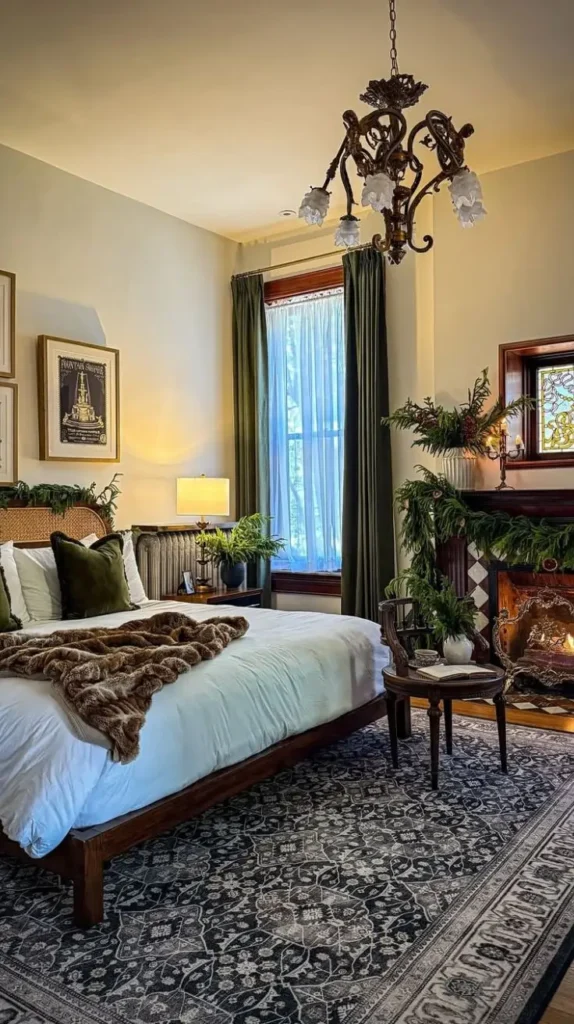
Transforming your bedroom into a Victorian-inspired sanctuary requires attention to detail and a deep understanding of the era’s design principles. The Victorian era, spanning from 1837 to 1901, was characterized by its love for opulence, grandeur, and intricate details, all of which can be incorporated into your bedroom design to create a space that is both elegant and cozy.
Four-Poster Beds and Bedroom Furniture
A hallmark of Victorian bedroom design is the use of four-poster beds, which not only serve as a statement piece but also add a touch of luxury to the room. When selecting a four-poster bed, consider the material and craftsmanship, opting for solid woods like mahogany or oak, and look for intricate carvings or ornate details. Other bedroom furniture, such as dressers and nightstands, should also reflect the Victorian style, with an emphasis on rich woods and ornate hardware.
Drapery and Textile Selections
Drapery and textiles play a crucial role in creating a Victorian-inspired bedroom. Rich fabrics like velvet, silk, and heavy cotton are ideal for curtains, bedding, and upholstery. Consider patterns that were popular during the Victorian era, such as florals, stripes, and damask. Layering different textures and patterns can add depth and visual interest to the room, creating a cozy and inviting atmosphere.
Victorian Bedroom Accessories
Accessories are the finishing touches that can make or break a Victorian-inspired bedroom. Start with lighting fixtures, such as table lamps or chandeliers, which can feature intricate metalwork or crystal details. Wall art and decorative items, like vintage prints or ornate mirrors, can also add to the Victorian ambiance.
– Vanities and Dressing Tables
A beautifully crafted vanity or dressing table is a must-have in a Victorian-style bedroom. Look for pieces with intricate carvings, marble tops, or ornate metalwork. These not only provide a functional space for grooming but also serve as a decorative focal point in the room.
– Personal Mementos and Displays
Displaying personal mementos and treasures is a great way to add a personal touch to your Victorian-inspired bedroom. Consider using decorative trays, vintage frames, or ornate cabinets to showcase your favorite items, creating a space that feels both elegant and personal.
Victorian Bathroom Renovation Ideas

The Victorian era, known for its opulence, offers a wealth of inspiration for bathroom renovations, from clawfoot tubs to intricate tile patterns. When renovating your bathroom to reflect this elegant style, consider incorporating period fixtures and traditional design elements to create a luxurious oasis.
Clawfoot Tubs and Period Fixtures
A hallmark of Victorian bathroom design is the clawfoot tub, a freestanding tub with ornate feet that evoke a sense of luxury. Pairing a clawfoot tub with period fixtures, such as antique-style faucets and ornate mirrors, can enhance the Victorian aesthetic. Look for fixtures with intricate details and classic designs to add authenticity to your bathroom.
Victorian Tile Patterns and Floor Designs
Victorian tile patterns are renowned for their complexity and beauty. Incorporating traditional tile designs, such as encaustic cement tiles or intricate mosaics, can add visual interest to your bathroom. Consider using a combination of tile patterns and colors to create a unique and eye-catching floor design. For a more authentic look, use tiles with a distressed or vintage finish.
Modern Adaptations of Victorian House Interiors
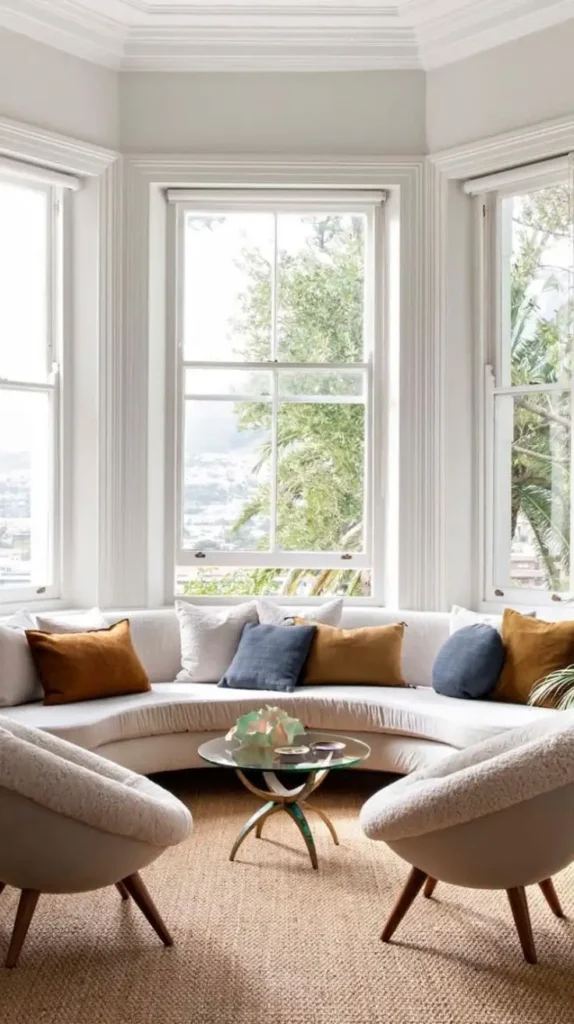
The Victorian era’s opulent design elements are being reimagined in modern homes, creating a unique fusion of past and present. This blend of historical charm with contemporary functionality is captivating homeowners who seek to add elegance and character to their living spaces.
Blending Victorian Elements with Contemporary Design
Combining Victorian elements with modern design principles can result in interiors that are both sophisticated and livable. For instance, incorporating intricate Victorian moldings with minimalist furniture can create a striking contrast that adds visual interest to a room. To achieve this blend, homeowners can pair rich, dark wood tones characteristic of Victorian design with contemporary light color palettes, creating a balanced aesthetic that honors both styles.
Space-Saving Victorian Ideas for Smaller Homes
While Victorian homes are often associated with grandeur and spaciousness, many of its design elements can be adapted for smaller modern homes. Space saving Victorian ideas include using wall mounted decorative shelves that echo the ornate detailing of the Victorian era, or incorporating multi-functional furniture pieces that reflect the resourcefulness of Victorian design.
Sustainable Approaches to Victorian Design
Sustainability is becoming increasingly important in home design, and Victorian aesthetics can be adapted to incorporate eco-friendly elements. By repurposing antique furniture and decorative items, homeowners can reduce waste while maintaining the historical charm associated with Victorian interiors.
– Repurposing Antique Elements
Repurposing antique elements not only contributes to sustainability but also adds a layer of history and authenticity to modern interiors. For example, restoring an antique Victorian-era sideboard for use in a modern kitchen or dining area can serve as a functional piece of history.
– Eco Friendly Victorian-Inspired Materials
In addition to repurposing antiques, using eco-friendly materials that echo Victorian design can further enhance the sustainability of a modern Victorian-inspired home. Materials such as reclaimed wood, low VOC paints, and sustainable textiles can be used to recreate the opulent feel of Victorian interiors in an environmentally conscious manner.
DIY Victorian Decor Projects and Budget-Friendly Tips
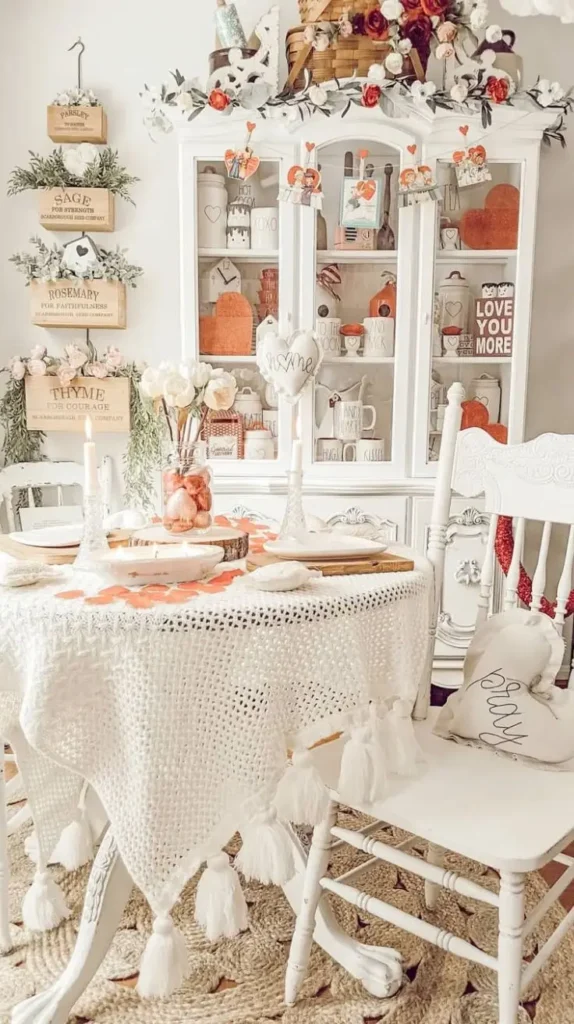
With a little creativity, you can achieve a luxurious Victorian look without the hefty price tag. The Victorian era was known for its opulence and attention to detail, but recreating this look doesn’t have to break the bank. By embracing DIY projects and budget-friendly tips, you can transform your home into a Victorian-inspired space that’s both elegant and affordable.
Upcycling Furniture with Victorian Flair
Upcycling old furniture is a great way to add Victorian flair to your home. Look for pieces with intricate carvings or ornate details that are characteristic of the Victorian era. You can refinish or repaint these pieces to give them a new life. For example, an old wooden chair can be transformed into a stunning Victorian-style chair with a fresh coat of paint and some decorative upholstery.
Some popular upcycling ideas include:
| Furniture Piece | Upcycling Idea |
|---|---|
| Old wooden chair | Repaint and reupholster with Victorian-style fabric |
| Vintage dresser | Add new hardware with ornate details |
| Antique table | Refinish with a rich, dark wood stain |
Creating Victorian-Inspired Wall Treatments
Wall treatments can greatly impact the overall aesthetic of a room. To achieve a Victorian-inspired look, consider using richly patterned wallpapers or creating a statement wall with a bold, contrasting color. You can also add decorative molding or trim to give your walls a more ornate feel.
Some popular Victorian-inspired wall treatment ideas include:
- Using damask or brocade wallpapers
- Creating a faux finish with glaze and ragging techniques
- Adding decorative cornice molding
Affordable Victorian Accessories and Where to Find Them
Adding Victorian-inspired accessories can be an affordable way to enhance your home’s decor. Look for items such as vintage vases, ornate picture frames, and intricately carved decorative boxes. You can find these items at thrift stores, antique shops, or online marketplaces.
Some popular places to find affordable Victorian accessories include:
| Store Type | Items to Look For |
|---|---|
| Thrift Stores | Vintage vases, picture frames |
| Antique Shops | Ornate decorative boxes, vintage clocks |
| Online Marketplaces | Victorian-style wall art, decorative accessories |
Embracing Victorian Elegance in Your Modern Home
As we’ve explored throughout this article, Victorian house interiors offer a wealth of inspiration for those looking to add a touch of elegance to their modern homes. By incorporating ornate architectural features, rich color palettes, and luxurious fabrics, you can create a space that exudes timeless charm.
Embracing Victorian elegance in your modern home is not about replicating the past; it’s about interpreting the essence of Victorian design and making it your own. You can blend traditional elements with contemporary flair, creating a unique aesthetic that reflects your personal style.
When bringing Victorian elements into your modern home, consider the balance between old and new. Pair a statement piece, like a intricately carved wooden chair, with sleek, modern furniture to create a captivating contrast. This fusion of styles will add depth and visual interest to your space, making it truly special.














